- TOP
- Search Criteria
- 2015 Echigo-Tsumari Art Triennale’s Must-See Three
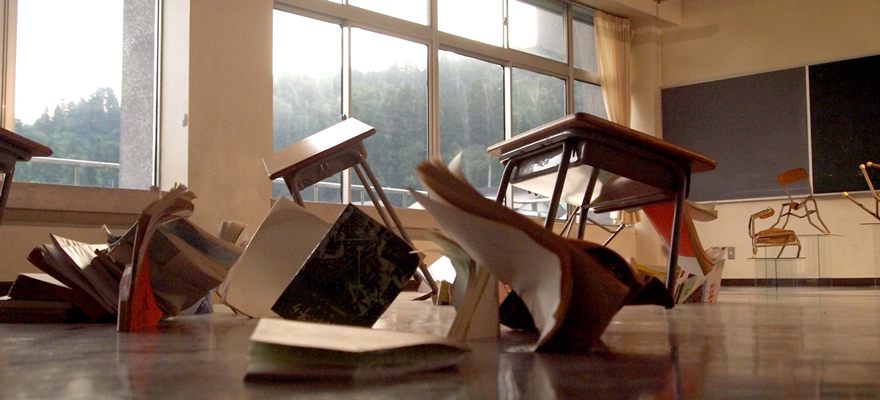
I was asked to choose my favorite artwork after spending two days at the Echigo-Tsumari Art Triennale.
I couldn't do it. There were just too many to choose from. After much effort, I was finally able to narrow down the pieces I liked to just three. One thing my selections have in common is that they all make use of an existing structure in the region. While appreciating this art, you can also gain deeper insight into the seldom-seem culture and way of life in rural Japan as well as some of the social problems it faces today. In this post, I’d like to share these three pieces with you.

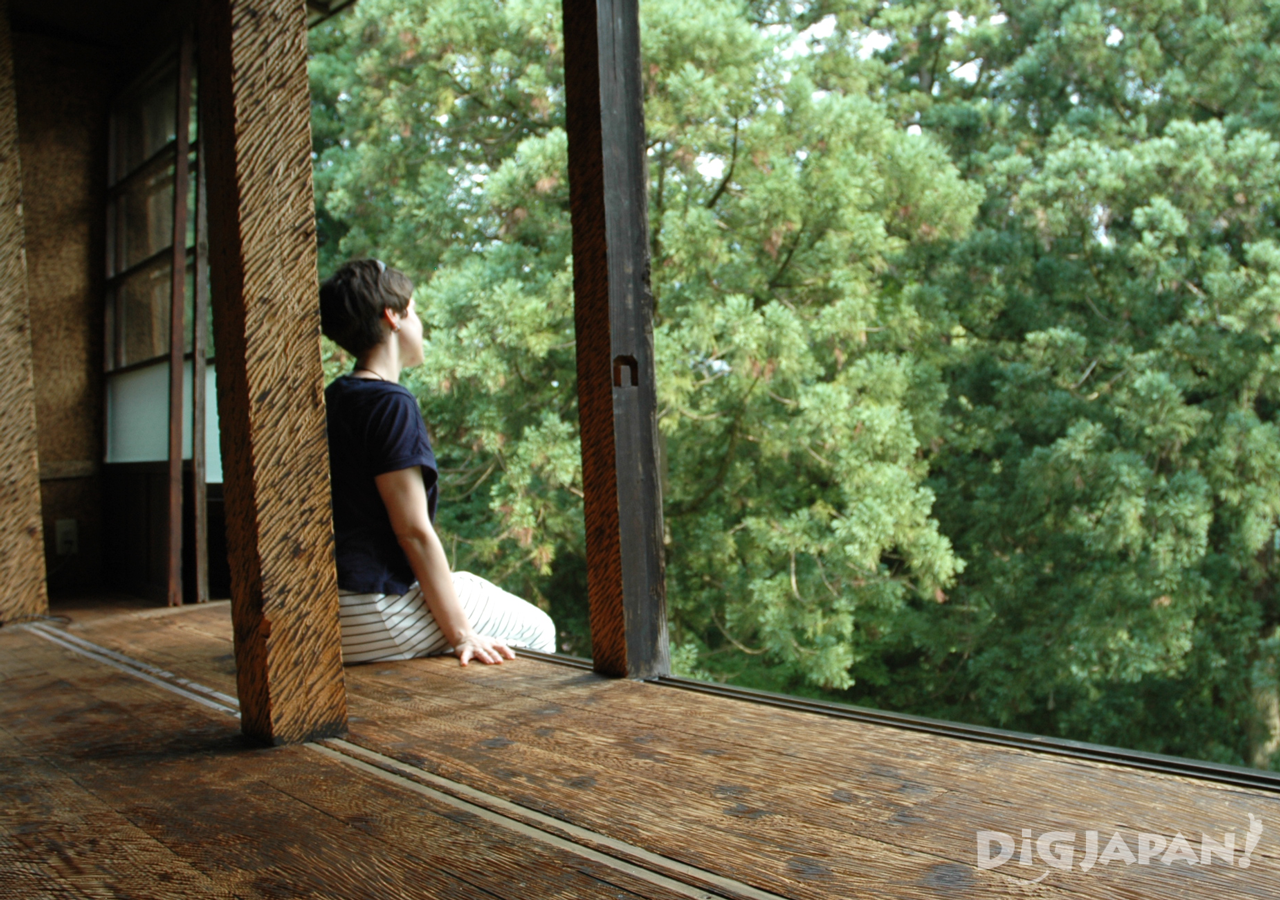
Artist Junichi Kurakake and a group of students enrolled in his art and sculpture course at Japan University College of Art spent a staggering 160 days carving with chisels into the walls, floors, pillars, beams, and whatever other surface they could find in an abandoned 150-year-old wooden house in the village of Hoshi Toge. As the original drop ceiling has been removed to expose the support beams for the roof, one can appreciate its steep slope, so designed to protect the building from the heavy snow that falls in the region during the winter months. The carvings reveal the original color of the wood, which stands out sharply thanks to the black paint applied to the exterior surface. As it is required to take off one’s shoes before entering, the feeling of the carvings underfoot adds to the experience.
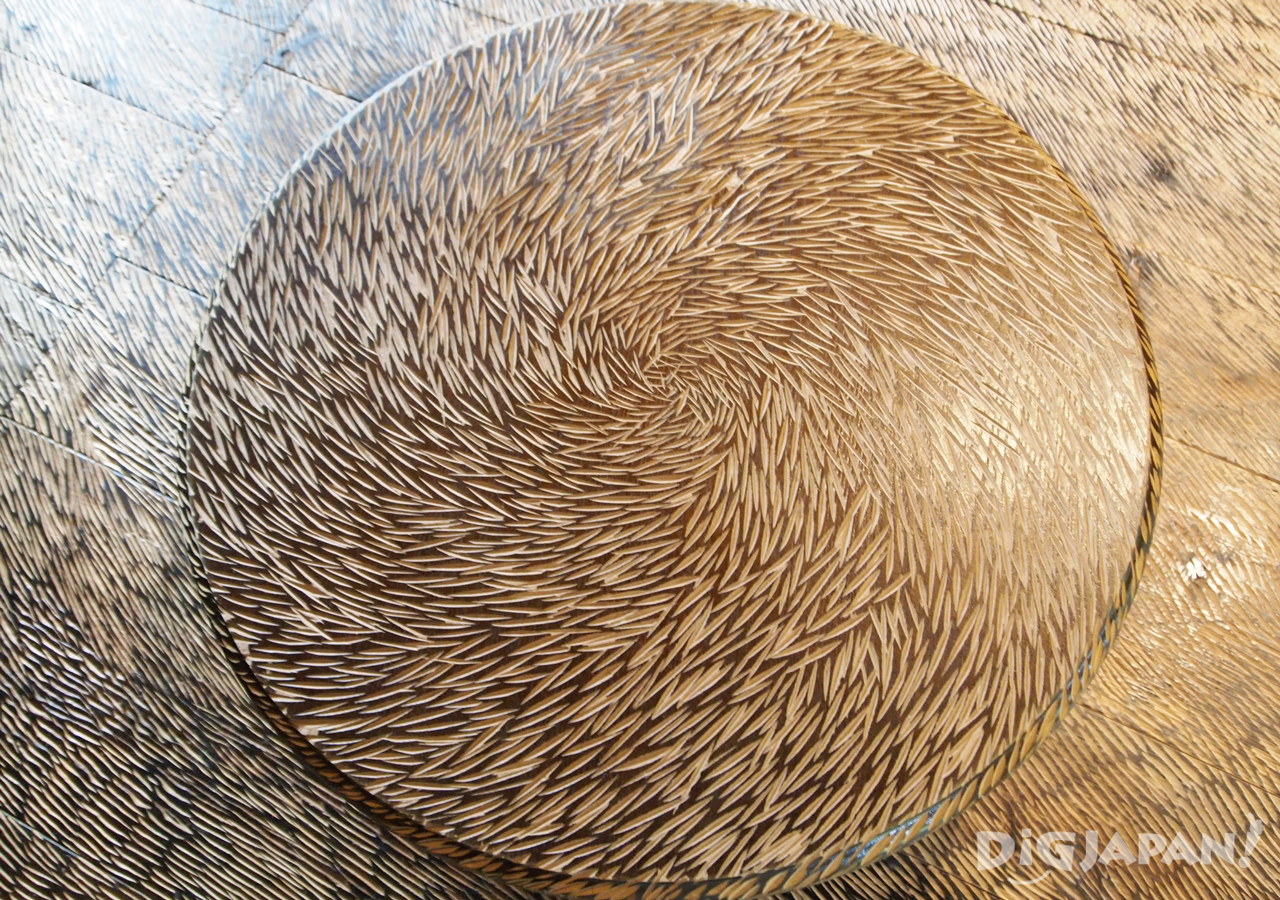
In addition to being a work of art, the Shedding House also functions as lodging for up to ten people. Guests can check-in after viewing hours have ended in the evening. The house includes all the basic necessities for cooking, but you can also order home-style veggie-based meals made with local ingredients. As the sun begins to set over the gorgeous terraced rice fields of Hoshi Toge and the first of thousands of stars begin to appear, it’s possible to enjoy a peace and stillness uncommon in larger cities.

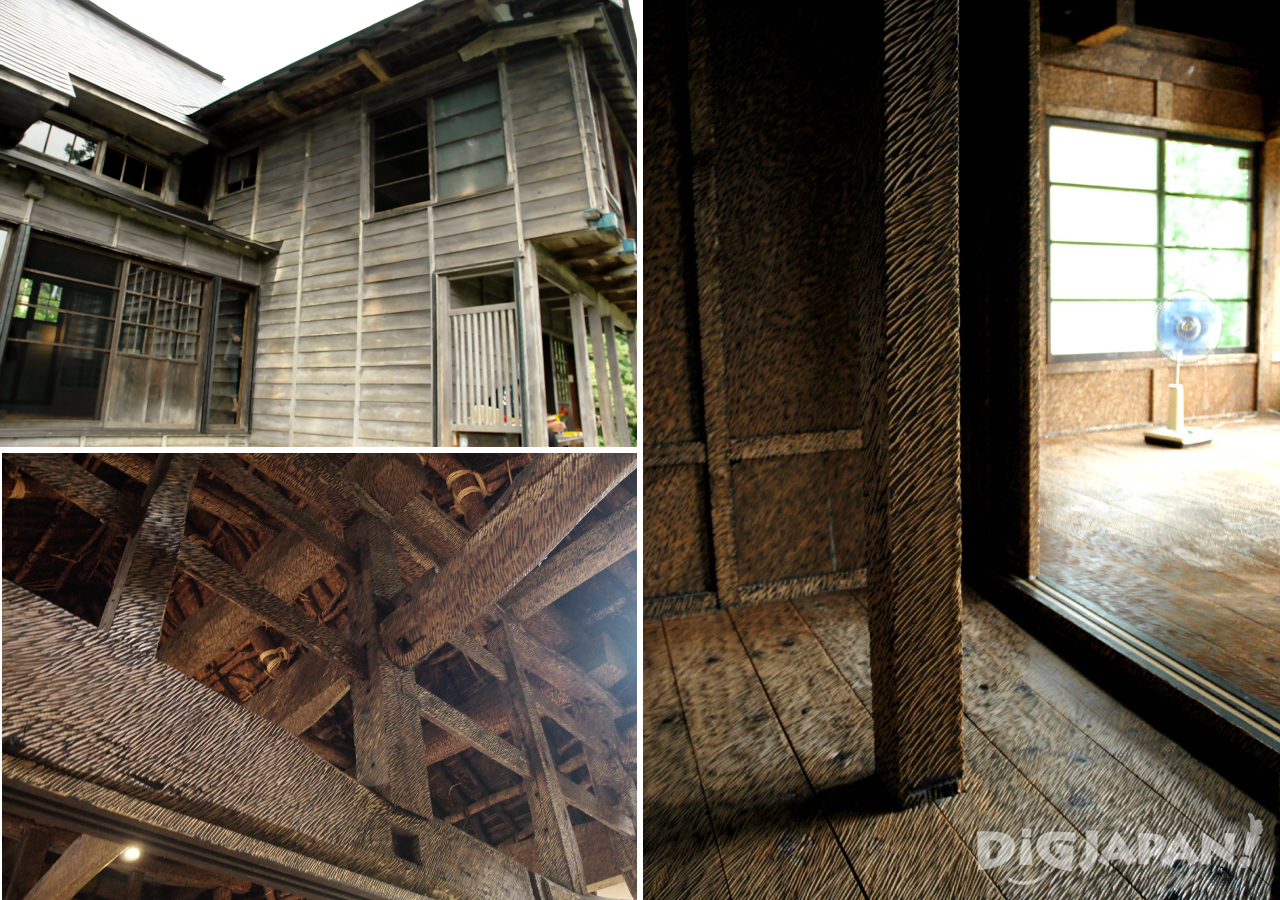
Artwork no.: D143
Viewing hours: 10:00am-4:00pm
Address: 776 Toge, Tokamachi-shi, Niigata
Artwork information page

The Nunagawa Elementary School which closed in March of 2014 for lack of students has been reborn as a learning center where the inherent value of the area is revealed through the intersection of art and agriculture. They hold open classes about food, dance, and cooking for visitors to join. You can also try carving a section of a mural with the help of one of Junichi Kurakake’s current students.
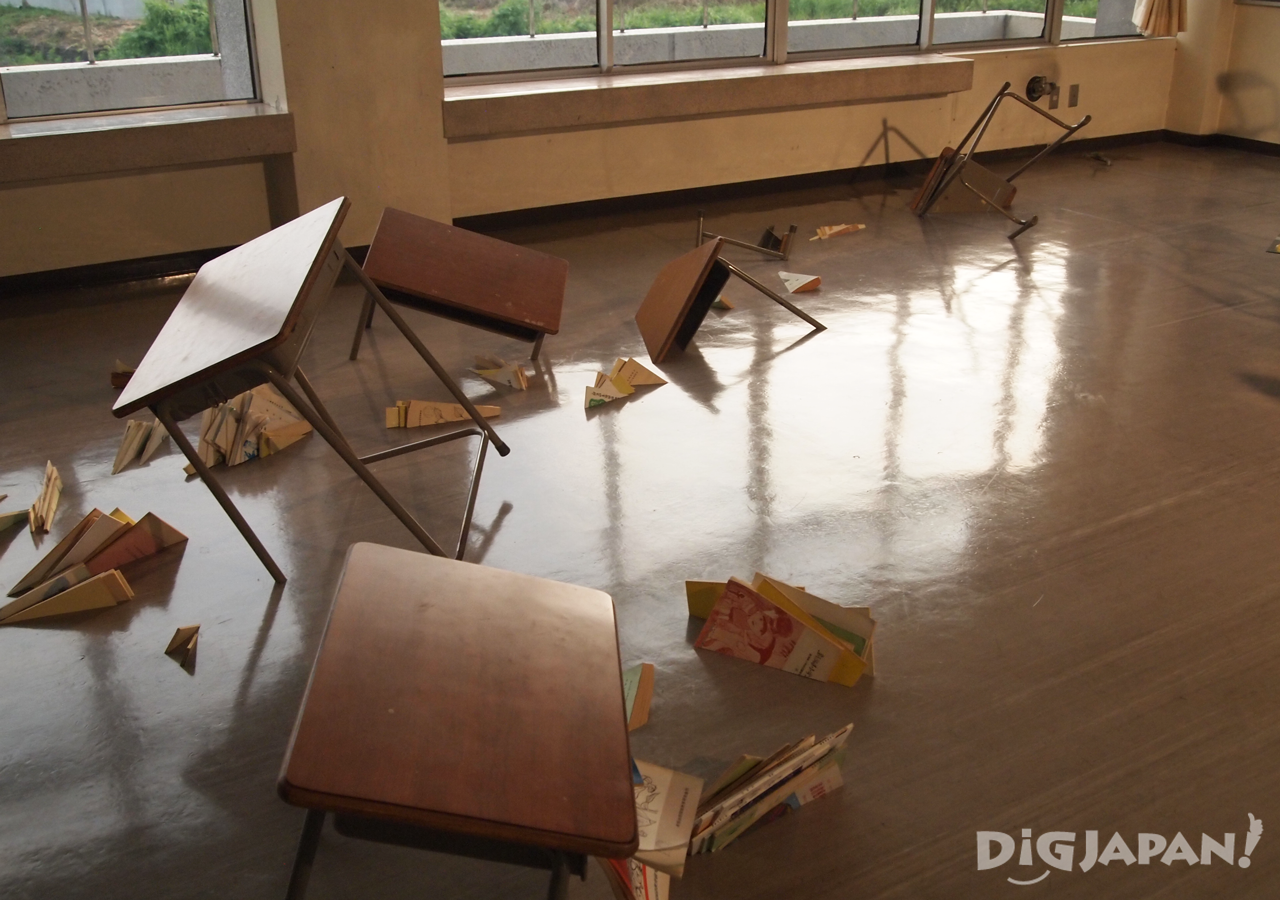
There are also art installations that make use of the school’s existing facilities such as science equipment, bookshelves, and so on. Out of everything in the building, my favorite piece was Naoko Tanaka’s The shadow of being. This is not fantasy. Here, books falling off shelves and desks tipping over are frozen in time. Some of them have begun to mysteriously disappear into the floor. There was something instantly relatable about that piece for me; it was the embodiment of that moment where everything stops right after you realize you have made a mistake and right before the ensuing disaster hits. In addition to the art and classes, there is also a cafeteria-style restaurant inside, making it a great place to stop for lunch.
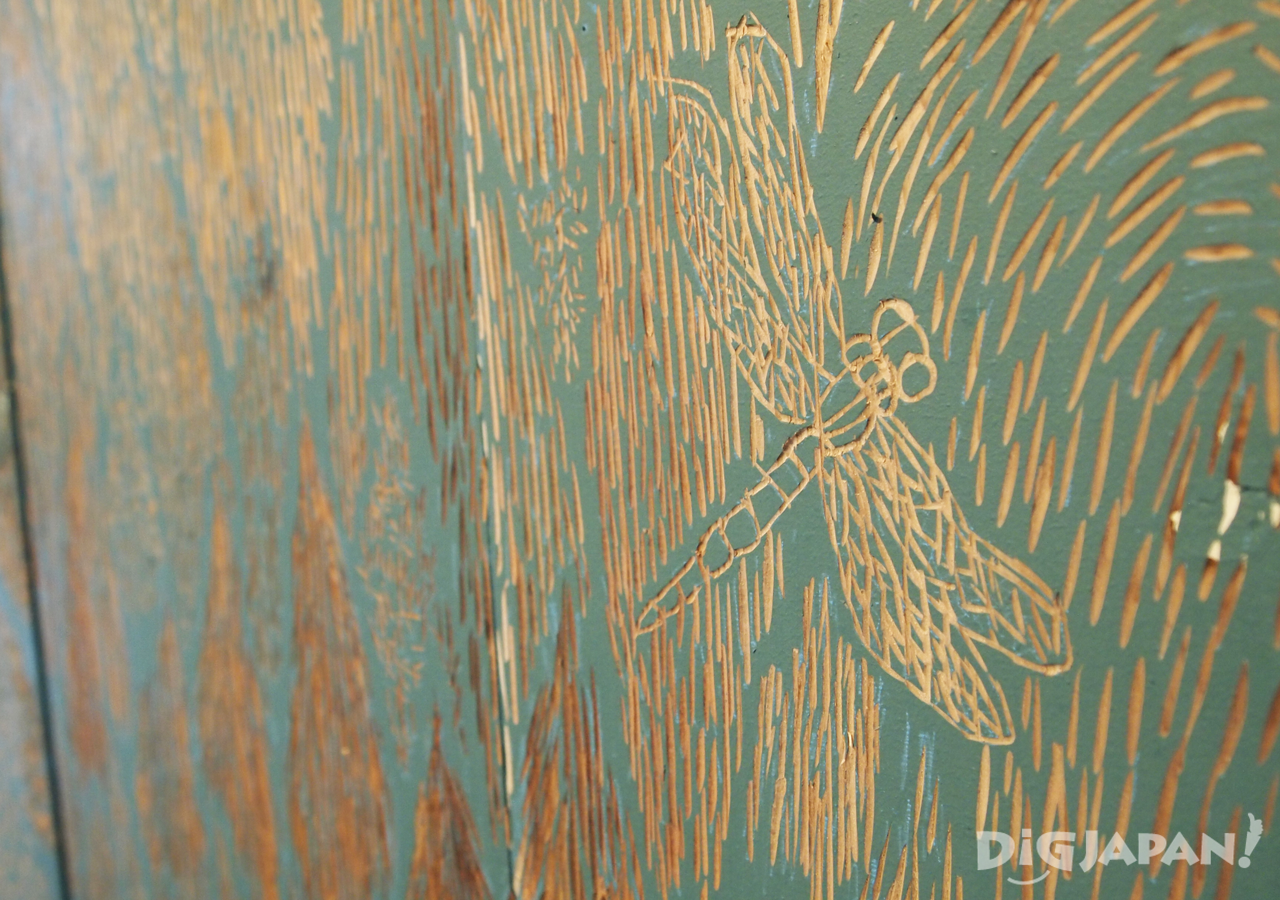
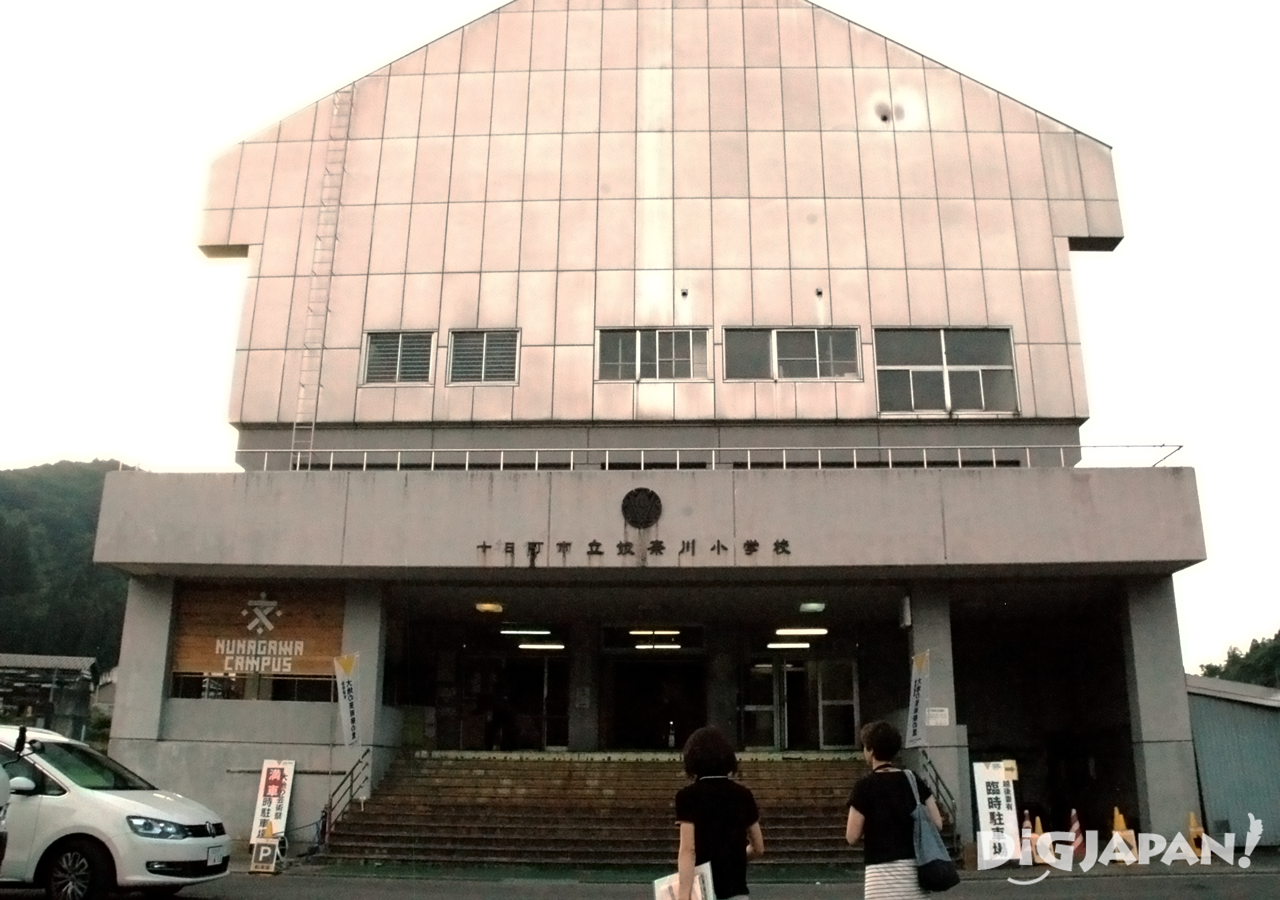
Artwork no.: D331
Viewing hours: 10:00am-5:30pm
Address: 576 Murono, Tokamachi-shi, Niigata
Artwork information page
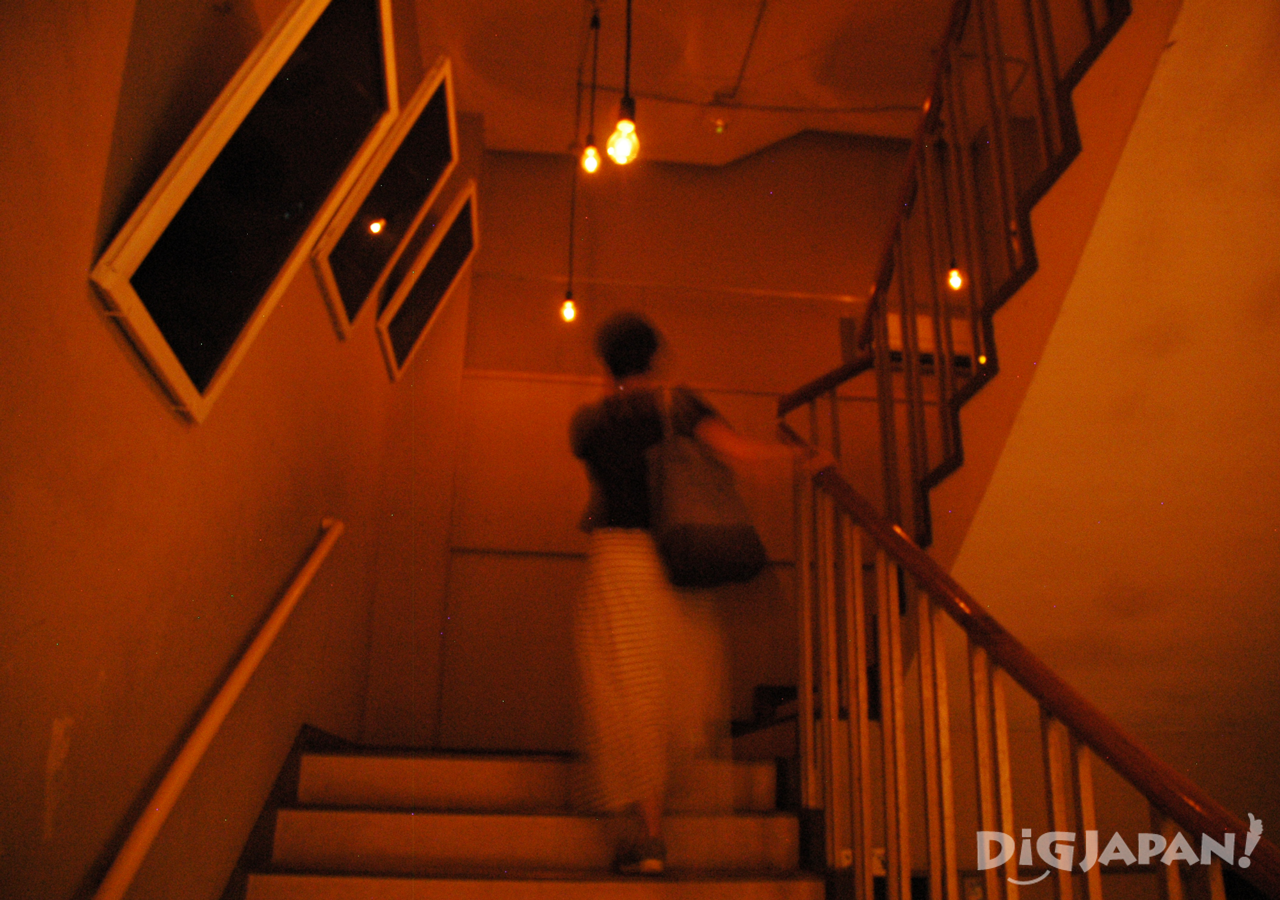
Unfortunately, Nunagawa Elementary is only one example of a school that has been forced to close its doors. While the Triennale has given these empty buildings new life as either places to display art or as works of art themselves, this doesn’t detract from the underlying issue: there simply aren’t enough young children left in the area to fill the schools.
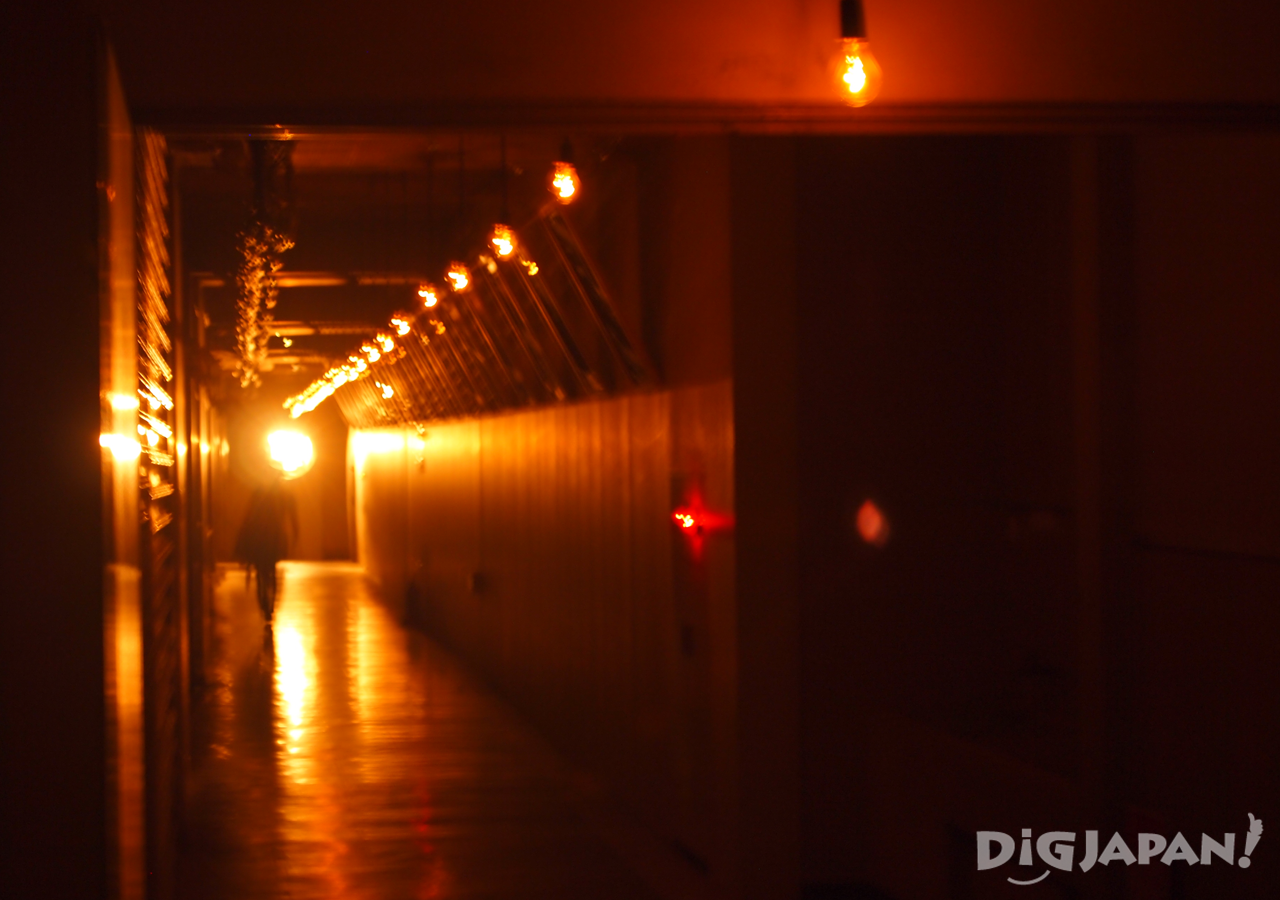
One site that seems to incorporate the social issues of Japan’s low birthrate coupled with the depopulation of the countryside is The Last Class by French artists Christian Boltanski and Jean Kalman. The neglected concrete facade and boarded-up windows of the school in which the exhibition is held look like the set of a horror film. The fact that the faint but distinct sound of a human heartbeat can be heard from the parking lot reinforces this idea. However, this is not intended to be a haunted house. There are no monsters, no zombie students inside. Rather, the concept of the piece is “a place where there are no people.” The artists have used light to show what the area has lost by reminding viewers of what was once there. Portraits lining the hallway walls that would have once shown the faces of former principals are now black. The dim golden glow of bare light bulbs suspended from the ceiling lead you deeper into the school. The heartbeat heard from the parking lot grows louder as you make your way further inside, reaching a crescendo when you enter a science lab where a single light bulb flashes aggressively in time with the rhythm. In the music room, you can find cubbies containing items that once belonged to the real students of this school: textbooks, negatives from pictures, diplomas.
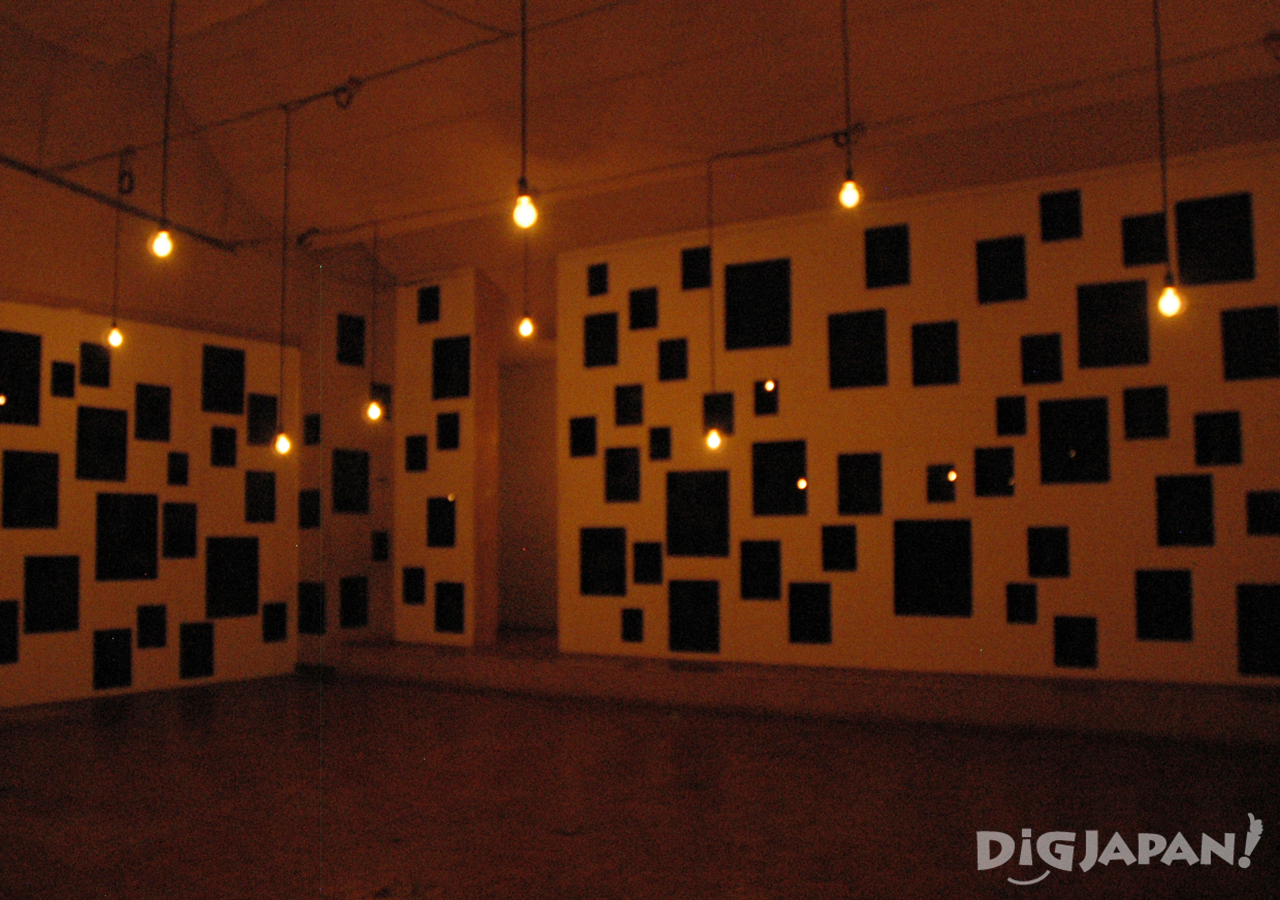
The visitors who come to The Last Class often say that the lights in the school are like the kehai—the traces or signs—left behind by the students. As someone who used to teach, I have felt the powerful presence of those signs in the strangely quiet classrooms after a graduation ceremony. While the students have physically moved on, the building itself seems to hold onto their memory. I think it is this feeling that The Last Class seeks to make visible.
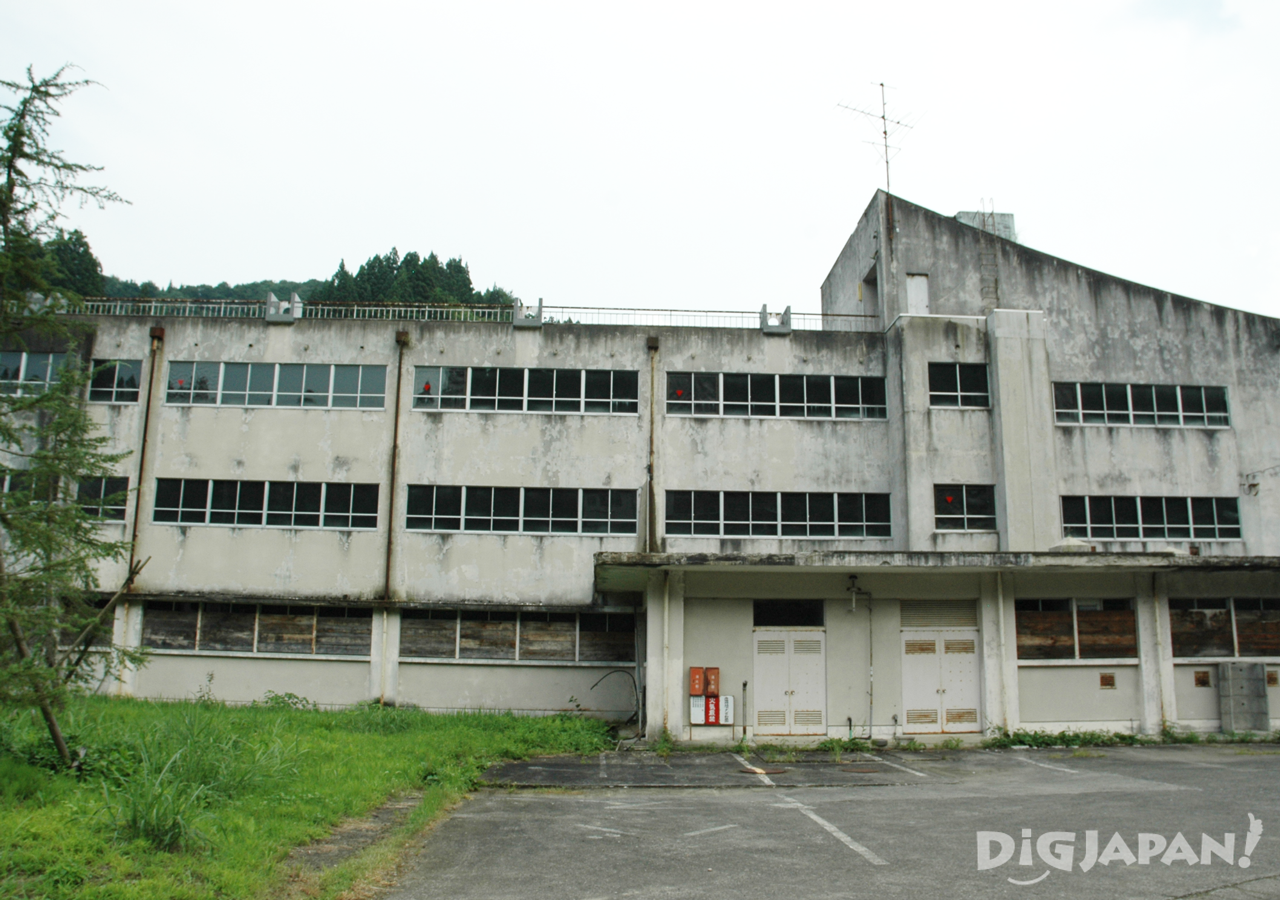
最後の教室 | Saigo no Kyōshitsu | The Last Class
Artwork no.: Y052
Viewing hours: 10:00am-5:30pm
Address: 576 Murono, Tokamachi-shi, Niigata
Artwork information page
The art presented at the Echigo-Tsumari Art Triennale ranges from light and playful to somber and thought provoking, and all of it serves to highlight the innate value of the beautiful area of which it is a part. I invite you to find those artworks which resonate with you.
Where: Tokamachi and Tsunanmachi, Niigata (Echigo-Tsumari Area)
When: July 26th thru September 13th, 2015
Visit their homepage here for access information.
I couldn't do it. There were just too many to choose from. After much effort, I was finally able to narrow down the pieces I liked to just three. One thing my selections have in common is that they all make use of an existing structure in the region. While appreciating this art, you can also gain deeper insight into the seldom-seem culture and way of life in rural Japan as well as some of the social problems it faces today. In this post, I’d like to share these three pieces with you.
脱皮する家 | Dappi Suru Ie | Shedding House


You can enjoy the view from the second floor of the Shedding House.
Artist Junichi Kurakake and a group of students enrolled in his art and sculpture course at Japan University College of Art spent a staggering 160 days carving with chisels into the walls, floors, pillars, beams, and whatever other surface they could find in an abandoned 150-year-old wooden house in the village of Hoshi Toge. As the original drop ceiling has been removed to expose the support beams for the roof, one can appreciate its steep slope, so designed to protect the building from the heavy snow that falls in the region during the winter months. The carvings reveal the original color of the wood, which stands out sharply thanks to the black paint applied to the exterior surface. As it is required to take off one’s shoes before entering, the feeling of the carvings underfoot adds to the experience.

A table in the Shedding House. The natural color of the wood stands out beautifully against the dark paint.
In addition to being a work of art, the Shedding House also functions as lodging for up to ten people. Guests can check-in after viewing hours have ended in the evening. The house includes all the basic necessities for cooking, but you can also order home-style veggie-based meals made with local ingredients. As the sun begins to set over the gorgeous terraced rice fields of Hoshi Toge and the first of thousands of stars begin to appear, it’s possible to enjoy a peace and stillness uncommon in larger cities.

The tools used to create the Shedding House.

Details from the Shedding House. Top left: the outside of the building. Bottom left: the beams supporting the roof. Right: a pillar on the second floor.
Information
脱皮する家 | Dappi Suru Ie | Shedding HouseArtwork no.: D143
Viewing hours: 10:00am-4:00pm
Address: 776 Toge, Tokamachi-shi, Niigata
Artwork information page
奴奈川キャンパス | Nunagawa Campus

Learning how to carve with a current student of artist Junichi Kurakake in Nunagawa Campus.
The Nunagawa Elementary School which closed in March of 2014 for lack of students has been reborn as a learning center where the inherent value of the area is revealed through the intersection of art and agriculture. They hold open classes about food, dance, and cooking for visitors to join. You can also try carving a section of a mural with the help of one of Junichi Kurakake’s current students.

A selection from The shadow of being. This is not fantasy. by Naoko Tanaka.
There are also art installations that make use of the school’s existing facilities such as science equipment, bookshelves, and so on. Out of everything in the building, my favorite piece was Naoko Tanaka’s The shadow of being. This is not fantasy. Here, books falling off shelves and desks tipping over are frozen in time. Some of them have begun to mysteriously disappear into the floor. There was something instantly relatable about that piece for me; it was the embodiment of that moment where everything stops right after you realize you have made a mistake and right before the ensuing disaster hits. In addition to the art and classes, there is also a cafeteria-style restaurant inside, making it a great place to stop for lunch.

A selection from a forest scene that has been carved into wooden sliding doors inside Nunagawa Campus.

The outside of Nunagawa Campus.
Information
奴奈川キャンパス | Nunagawa CampusArtwork no.: D331
Viewing hours: 10:00am-5:30pm
Address: 576 Murono, Tokamachi-shi, Niigata
Artwork information page
最後の教室 | Saigo no Kyōshitsu | The Last Class

Walking up stairs in the dimly lit school. Note the blacked-out picture frames.
Unfortunately, Nunagawa Elementary is only one example of a school that has been forced to close its doors. While the Triennale has given these empty buildings new life as either places to display art or as works of art themselves, this doesn’t detract from the underlying issue: there simply aren’t enough young children left in the area to fill the schools.

A hallway on the first floor. A slowly rotating fan at the end of the hallway cuts the light.
One site that seems to incorporate the social issues of Japan’s low birthrate coupled with the depopulation of the countryside is The Last Class by French artists Christian Boltanski and Jean Kalman. The neglected concrete facade and boarded-up windows of the school in which the exhibition is held look like the set of a horror film. The fact that the faint but distinct sound of a human heartbeat can be heard from the parking lot reinforces this idea. However, this is not intended to be a haunted house. There are no monsters, no zombie students inside. Rather, the concept of the piece is “a place where there are no people.” The artists have used light to show what the area has lost by reminding viewers of what was once there. Portraits lining the hallway walls that would have once shown the faces of former principals are now black. The dim golden glow of bare light bulbs suspended from the ceiling lead you deeper into the school. The heartbeat heard from the parking lot grows louder as you make your way further inside, reaching a crescendo when you enter a science lab where a single light bulb flashes aggressively in time with the rhythm. In the music room, you can find cubbies containing items that once belonged to the real students of this school: textbooks, negatives from pictures, diplomas.

The music room.
The visitors who come to The Last Class often say that the lights in the school are like the kehai—the traces or signs—left behind by the students. As someone who used to teach, I have felt the powerful presence of those signs in the strangely quiet classrooms after a graduation ceremony. While the students have physically moved on, the building itself seems to hold onto their memory. I think it is this feeling that The Last Class seeks to make visible.

The outside of The Last Class.
Information
最後の教室 | Saigo no Kyōshitsu | The Last Class
Artwork no.: Y052
Viewing hours: 10:00am-5:30pm
Address: 576 Murono, Tokamachi-shi, Niigata
Artwork information page
The art presented at the Echigo-Tsumari Art Triennale ranges from light and playful to somber and thought provoking, and all of it serves to highlight the innate value of the beautiful area of which it is a part. I invite you to find those artworks which resonate with you.
Event Info
What: Echigo-Tsumari Art Triennale 2015Where: Tokamachi and Tsunanmachi, Niigata (Echigo-Tsumari Area)
When: July 26th thru September 13th, 2015
Visit their homepage here for access information.

Liked this story? Like DiGJAPAN!
on Facebook for daily updates!
THIS ARTICLE IS BASED ON INFORMATION FROM 11 11,2015 Author:Rachael Ragalye













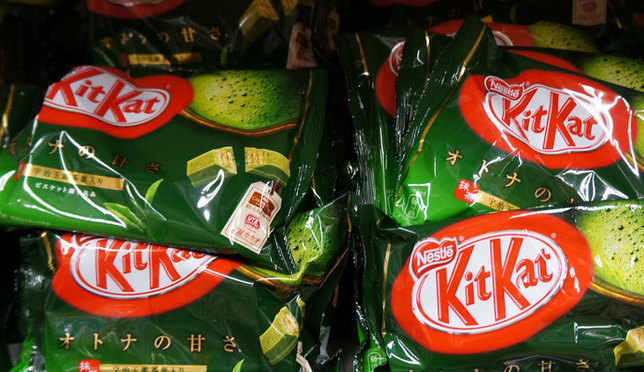
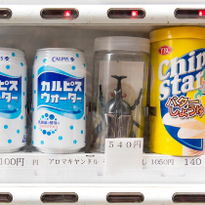

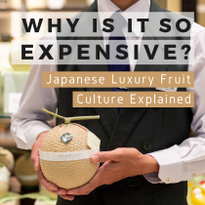





NEW COMMENT | 0 COMMENTS
Open a DiGJAPAN!
account to comment.
Open a DiGJAPAN! Account